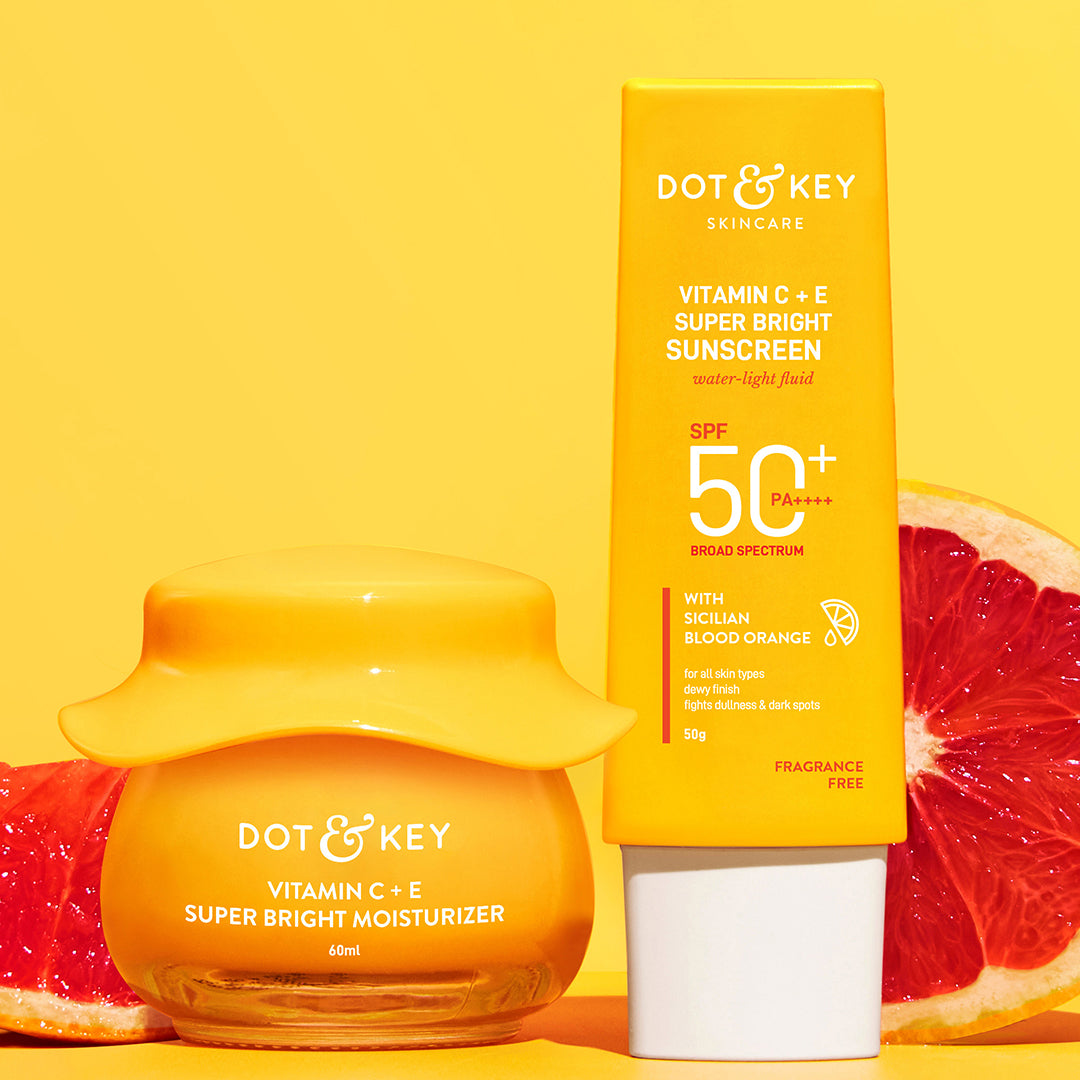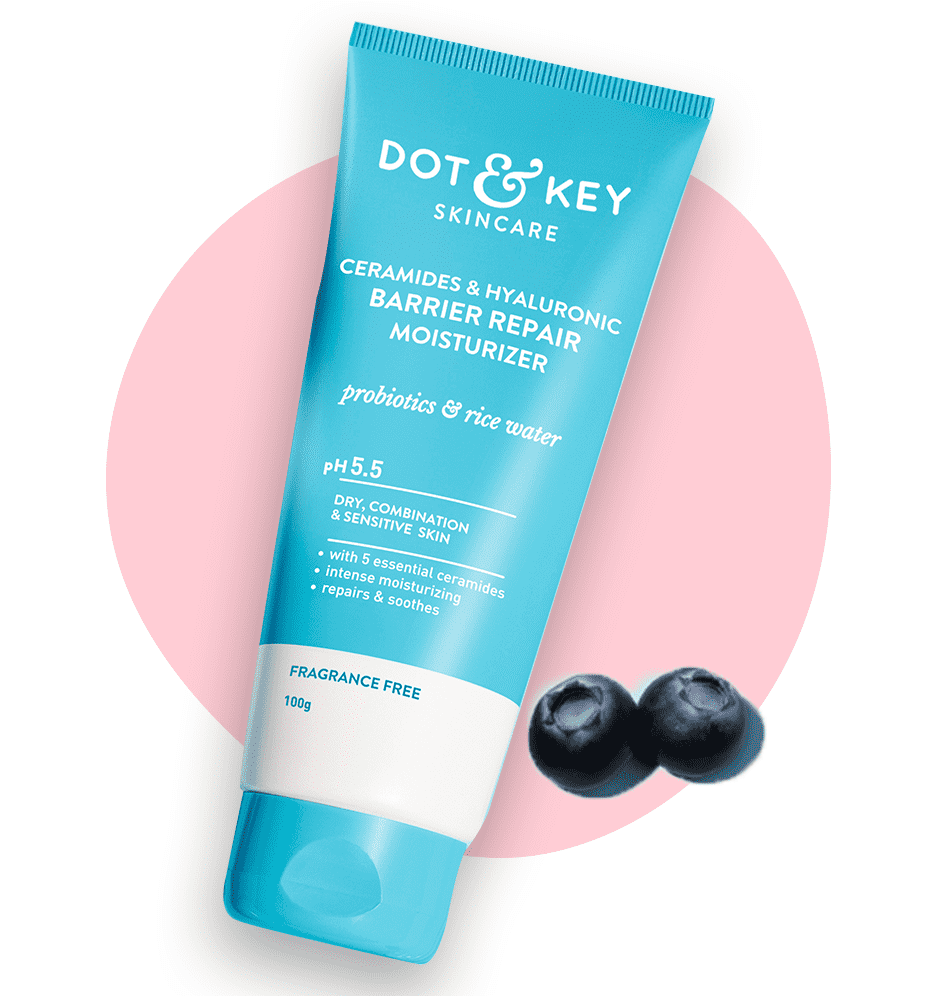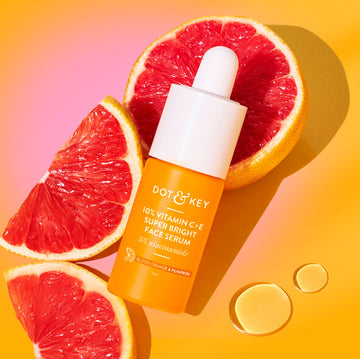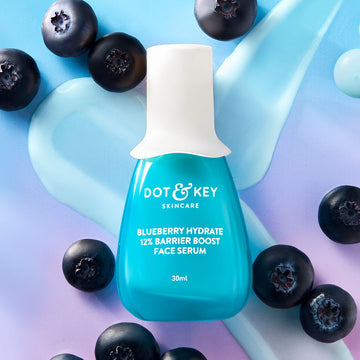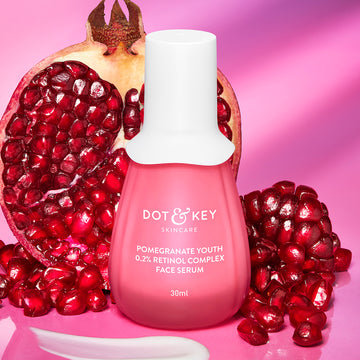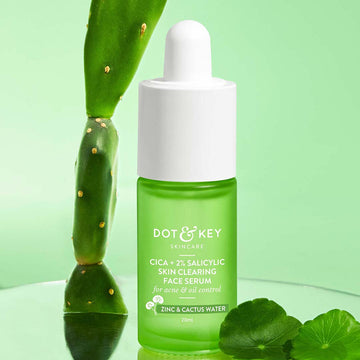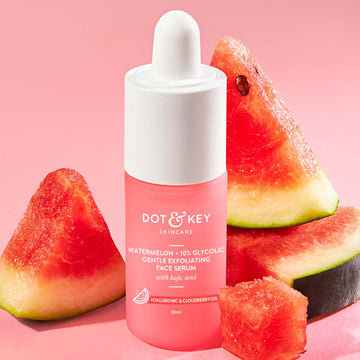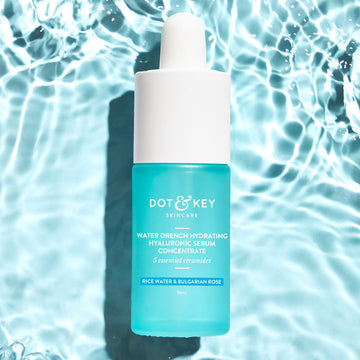
Face serums are skincare superheroes—lightweight, fast-absorbing, and packed with potent active ingredients designed to target concerns like dullness, acne, fine lines, or dark spots. But timing matters. Knowing when to apply your serum—morning, night, or both—can significantly impact its effectiveness and minimize the risk of irritation.
In this article, we’ll break down the best times to use different types of serums (like vitamin C, hyaluronic acid, or retinol), how they fit into your skincare routine, and expert tips to get the most out of every drop. Backed by research and dermatologist insights, this guide will help you build a serum schedule that supports glowing, balanced skin—day and night.
Whether you're just starting out or looking to fine-tune your routine, you'll learn how to time your serum use for optimal skin benefits.
What Are Face Serums and Why Timing Matters
Face serums are lightweight, fast-absorbing liquids with high concentrations of active ingredients, such as antioxidants, retinoids, or hydrators. Unlike moisturizers, which hydrate and seal, serums deliver targeted treatments deep into the skin. Common goals include:
- Brightening (e.g., vitamin C)
- Anti-ageing (e.g., retinol, peptides)
- Hydration (e.g., hyaluronic acid)
- Acne control (e.g., niacinamide, salicylic acid)
Timing matters because:
- Ingredient stability: Some actives (e.g., vitamin C) are sensitive to light or air, affecting efficacy.
- Skin repair cycle: The skin’s regeneration peaks at night, ideal for certain treatments.
- UV sensitivity: Some ingredients (e.g., retinol) increase sun sensitivity, requiring nighttime use.
- Layering compatibility: Serums must work with moisturizers and SPF for maximum benefit.
A 2020 study in Journal of Cosmetic Dermatology found that applying active ingredients at optimal times increased their penetration by 25%, enhancing results for concerns like hyperpigmentation or wrinkles.
Dr. Sarah Kim, a dermatologist, explains: “Serums are your skin’s precision tools. Applying them at the right time ensures they work effectively without causing irritation or clashing with other products.”
Morning vs. Night: When to Apply Face Serums
The best time to apply a face serum depends on its active ingredients, your skin concerns, and how it fits into your routine. Here’s a breakdown of common serums and their ideal application times, backed by research.
Morning Serums
Morning serums focus on protection against environmental stressors (e.g., UV rays, pollution) and brightening for a radiant complexion. Apply after cleansing and toning but before moisturizer and sunscreen.
1. Vitamin C Serums
- Purpose: Brightens skin, fades hyperpigmentation, and neutralizes free radicals from UV or pollution.
- Why Morning: Vitamin C is an antioxidant that protects against daytime oxidative stress. It’s most effective when paired with SPF.
- Research: A 2019 study in The Journal of Clinical and Aesthetic Dermatology showed that morning vitamin C application reduced UV-induced damage by 20% when used with SPF.
- How to Apply: Use 4–5 drops, wait 1–2 minutes, then apply moisturizer and broad-spectrum SPF 30+.
2. Niacinamide Serums
- Purpose: Reduces inflammation, controls sebum, brightens, and strengthens the barrier.
- Why Morning: Niacinamide is stable in light and protects against environmental damage, making it ideal for daytime use. It also works well under makeup.
- Research: A 2020 study in Dermatology and Therapy found that morning niacinamide application reduced hyperpigmentation by 15% after 6 weeks.
- How to Apply: Apply a thin layer, wait 30–60 seconds, then follow with moisturizer and SPF.
3. Hyaluronic Acid Serums
- Purpose: Hydrates and plumps skin, reducing fine lines and dryness.
- Why Morning: Provides all-day hydration, creating a smooth base for makeup and SPF. Can also be used at night.
- Research: A 2018 study in Journal of Cosmetic Science showed that hyaluronic acid increased skin hydration by 30% when applied in the morning.
- How to Apply: Apply to damp skin for maximum moisture retention, then seal with moisturizer.
Expert Tip: Dr. Michael Lee, a dermatologist, advises: “Morning serums like vitamin C and niacinamide are your skin’s shield against the day. Always follow with SPF to lock in protection.”
Night Serums
Night serums focus on repair and renewal, leveraging the skin’s peak regeneration cycle. Apply after cleansing and toning but before moisturizer or occlusives.
1. Retinol/Retinoid Serums
- Purpose: Accelerates cell turnover, reduces wrinkles, fades hyperpigmentation, and clears acne.
- Why Night: Retinol is photosensitive, breaking down in sunlight, and increases UV sensitivity, making nighttime use essential.
- Research: A 2019 study in Dermatologic Surgery found that nightly retinol use improved fine lines by 20% and acne by 25% after 12 weeks.
- How to Apply: Start with a pea-sized amount 2–3 nights per week, buffering with moisturizer if sensitive. Follow with a rich moisturizer.
2. Peptide Serums
- Purpose: Boosts collagen production, improves elasticity, and supports anti-ageing.
- Why Night: Peptides enhance skin repair during the overnight regeneration cycle, complementing other actives like retinol.
- Research: A 2020 study in The British Journal of Dermatology showed that nightly peptide application increased collagen density by 15% after 8 weeks.
- How to Apply: Apply a thin layer, wait 1–2 minutes, then seal with moisturizer.
3. AHAs/BHAs (Exfoliating Serums)
- Purpose: Exfoliates dead skin, unclogs pores, and smooths texture (e.g., glycolic acid, salicylic acid).
- Why Night: Exfoliating acids increase sun sensitivity and are most effective during skin repair at night.
- Research: A 2018 study in Journal of Cosmetic Dermatology found that nightly glycolic acid use improved skin texture by 20% after 6 weeks.
- How to Apply: Use 2–3 nights per week, followed by a soothing moisturizer to reduce irritation.
Expert Tip: Dr. Emily Chen, a skincare expert, says: “Night is when your skin does its heavy lifting. Serums like retinol or AHAs capitalize on this repair phase for transformative results.”
Serums for Both Morning and Night
Some serums are versatile and can be used twice daily, depending on your skin’s needs and tolerance.
1. Hyaluronic Acid
- Why Both: Provides continuous hydration, suitable for all skin types, and doesn’t conflict with other actives.
- How to Apply: Use morning and night on damp skin, followed by moisturizer.
2. Niacinamide
- Why Both: Gentle enough for twice-daily use, supports barrier repair, and complements other actives.
- How to Apply: Use morning for protection, night for repair, adjusting frequency if combining with retinoids or acids.
3. Antioxidant Blends (e.g., Vitamin E, Ferulic Acid)
- Why Both: Protect against daytime stressors and support nighttime repair, especially in dry or mature skin.
- How to Apply: Use morning under SPF, night under moisturizer, ensuring compatibility with other serums.
Note: Avoid overloading your skin. If using multiple serums, limit to 1–2 per routine and alternate actives (e.g., vitamin C in the morning, retinol at night) to prevent irritation.
Factors to Consider When Choosing Morning or Night
To decide when to apply your face serum, consider these factors:
Ingredient Sensitivity
- Photosensitive actives (e.g., retinol, AHAs): Use at night to avoid UV degradation or irritation.
- Antioxidants (e.g., vitamin C): Best used in the morning to combat daytime environmental stressors.
Skin Type and Sensitivity
- Oily/Acne-Prone: Morning niacinamide or salicylic acid controls oil; nightly retinoids unclog pores.
- Dry/Sensitive: Morning hyaluronic acid hydrates; nightly peptides or ceramides repair the barrier.
- Combination: Balance with niacinamide morning and night; add retinol sparingly at night.
Skin Concerns
- Hyperpigmentation: Morning vitamin C with SPF; nightly retinoids or AHAs to fade dark spots.
- Anti-Ageing: Morning antioxidants to prevent damage; nightly retinol or peptides to boost repair.
- Acne: Morning niacinamide or salicylic acid to calm breakouts; nightly retinoids or BHAs for exfoliation.
Routine Compatibility
- Ensure serums don’t clash (e.g., avoid using vitamin C with AHAs in the same routine).
- Always layer with moisturizer and apply SPF in the morning to protect and boost efficacy.
A 2021 study in Dermatology and Therapy found that tailoring serum application to skin concerns and optimal timing improved treatment outcomes by 30% for issues like acne and hyperpigmentation.
How to Apply Face Serums Effectively
To maximize serum benefits, follow these research-backed application tips:
Cleanse First
Use a gentle cleanser to remove impurities, ensuring serum penetration. A 2019 study in Journal of Cosmetic Science showed that clean skin improved active absorption by 15%.
Apply to Damp Skin
For hydrating serums (e.g., hyaluronic acid), apply on slightly damp skin to lock in moisture. A 2020 study in Dermatology and Therapy found damp application increased hydration by 20%.
Use the Right Amount
Apply4–5 drops or a pea-sized amount for the face and neck, spreading evenly with fingertips.
Wait Between Layers
Allow 30–60 seconds for the serum to absorb before applying moisturizer or SPF to prevent pilling or dilution.
Layer Correctly
Apply serums from thinnest to thickest consistency (e.g., water-based niacinamide before oil-based vitamin E). Follow with moisturizer to seal in the actives, and finish with SPF in the morning.
Pair with SPF (Morning)
Always apply broad-spectrum SPF 30+ (about two finger-lengths for face and neck) after morning serums to protect against UV damage. A 2019 study in The Journal of Investigative Dermatology showed SPF reduced UV-induced damage by 50%.
Be Consistent
Use serums daily (or as directed, especially for actives like retinol) for 6–12 weeks to see visible improvements. A 2020 study in Clinical, Cosmetic and Investigational Dermatology found consistent use improved skin concerns by 25%.
Expert Tip: Dr. Jane Smith advises: “Pat serums gently into the skin rather than rubbing to avoid irritation, and always follow with a moisturizer to lock in benefits.”
Sample Serum Routines by Skin Concern
Here are dermatologist-recommended routines to show when to apply serums for common concerns:
Hyperpigmentation (Morning & Night)
Morning:
- Gentle cleanser
- Vitamin C serum (brightening)
- Niacinamide serum (optional, for extra fading)
- Lightweight moisturizer
- Broad-spectrum SPF 30+
Night:
- Double-cleanse
- Retinol serum (2–3 nights/week, buffer with moisturizer if sensitive)
- Hyaluronic acid serum (on alternate nights)
- Rich moisturizer
Acne (Morning & Night)
Morning:
- Gentle cleanser
- Niacinamide serum (oil control, inflammation)
- Salicylic acid serum (optional, for clogged pores)
- Gel moisturizer
- Broad-spectrum SPF 30+
Night:
- Double-cleanse
- Retinol or adapalene serum (2–3 nights/week)
- Hyaluronic acid serum (hydration)
- Lightweight moisturizer
Anti-Ageing (Morning & Night)
Morning:
- Gentle cleanser
- Vitamin C + E serum (antioxidant protection)
- Hyaluronic acid serum (hydration)
- Moisturizer
- Broad-spectrum SPF 30+
Night:
- Double-cleanse
- Retinol serum (anti-wrinkle)
- Peptide serum (collagen boost)
- Rich moisturizer
Dry/Sensitive Skin (Morning & Night)
Morning:
- Gentle cleanser
- Hyaluronic acid serum (hydration)
- Niacinamide serum (soothing)
- Cream moisturizer
- Broad-spectrum SPF 30+
Night:
- Gentle cleanser
- Ceramide or peptide serum (barrier repair)
- Hyaluronic acid serum
- Rich moisturizer
Note: Start actives like retinol or AHAs gradually (2–3 nights per week) to build tolerance and avoid irritation.
Common Mistakes to Avoid with Serum Application
Even with the right timing, these mistakes can undermine your serum’s effectiveness:
- Applying on Dirty Skin: Residual makeup or oil blocks penetration. Always cleanse first.
- Using Too Much: Excess product can irritate or pill. Stick to 4–5 drops.
- Mixing Incompatible Actives: Avoid using vitamin C with AHAs or retinol in the same routine to prevent irritation or reduced efficacy.
- Skipping Moisturizer: Serums alone don’t hydrate enough; always seal with moisturizer.
- No SPF with Morning Serums: UV exposure negates antioxidant benefits and worsens damage. Apply SPF daily.
Conclusion
Knowing when to apply face serums—morning or night—unlocks their full potential for addressing your skin concerns. Morning serums like vitamin C, niacinamide, or hyaluronic acid protect against environmental damage and hydrate, while nighttime serums like retinol, peptides, or AHAs repair and renew during the skin’s regeneration cycle.
By timing your serums correctly, layering them strategically, and pairing with moisturizer and SPF, you can achieve brighter, clearer, and more youthful skin.
Frequently Asked Questions (FAQs)
1. Can I use the same serum morning and night?
Some serums (e.g., hyaluronic acid, niacinamide) are safe for both, but actives like retinol or AHAs are best at night, while vitamin C is ideal in the morning.
2. Should I apply serum before or after moisturizer?
Apply serum before moisturizer to ensure active ingredients penetrate deeply. Moisturizer seals them in.
3. Can I layer multiple serums?
Yes, but limit to 1–2 serums per routine, applying from thinnest to thickest. Wait 30–60 seconds between layers and ensure compatibility (e.g., avoid vitamin C with retinol).
4. Why do some serums cause irritation when applied in the morning?
Actives like AHAs or retinoids increase sun sensitivity, which can lead to irritation. Use them at night and always pair morning serums with SPF.
5. Do I need SPF after morning serums?
Yes, broad-spectrum SPF 30+ is essential to protect skin and enhance serum benefits, especially with antioxidants like vitamin C.

